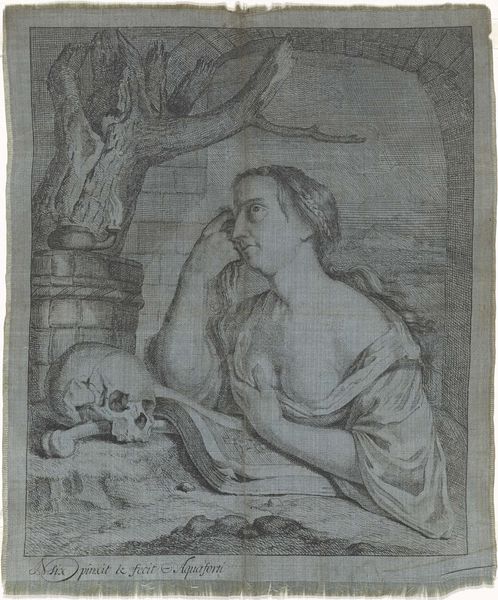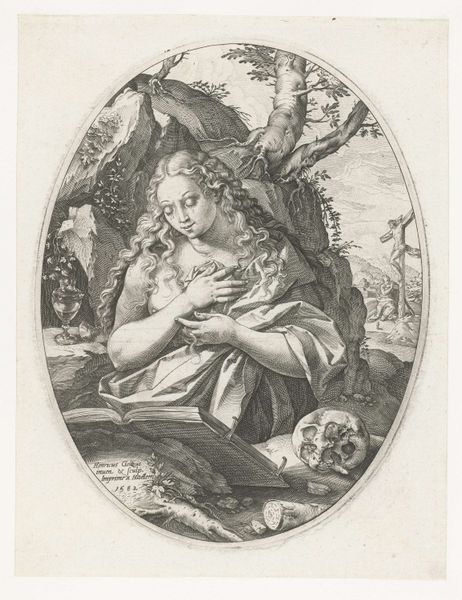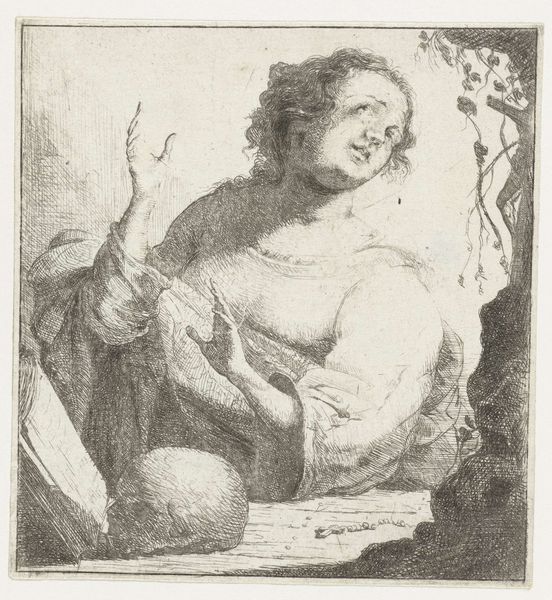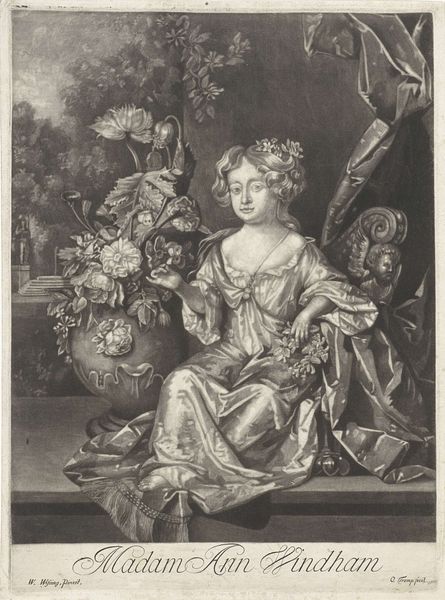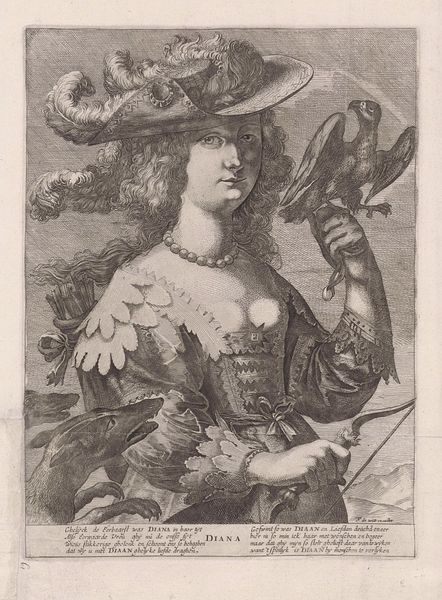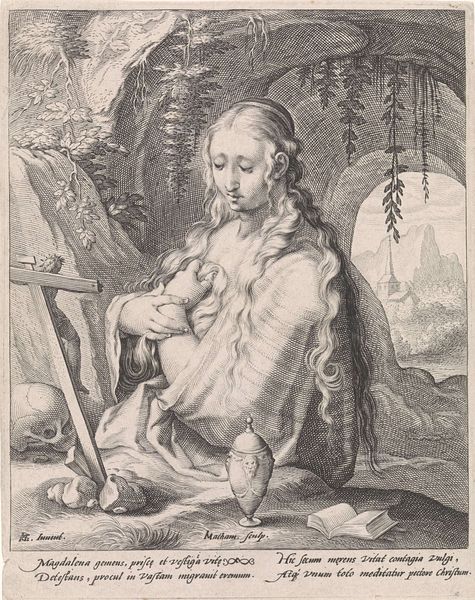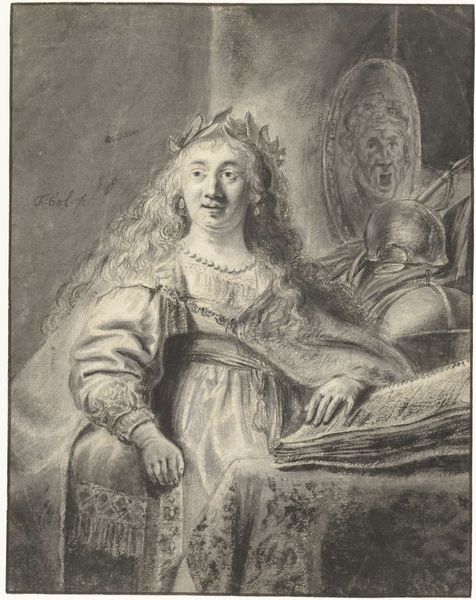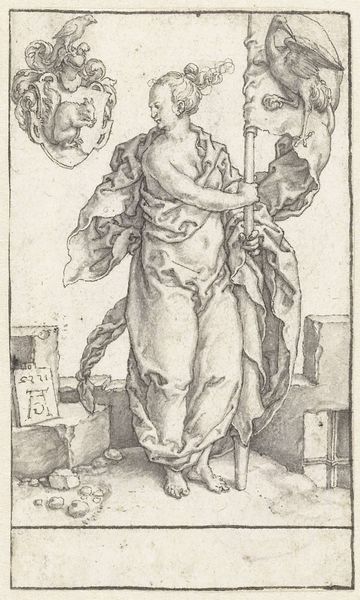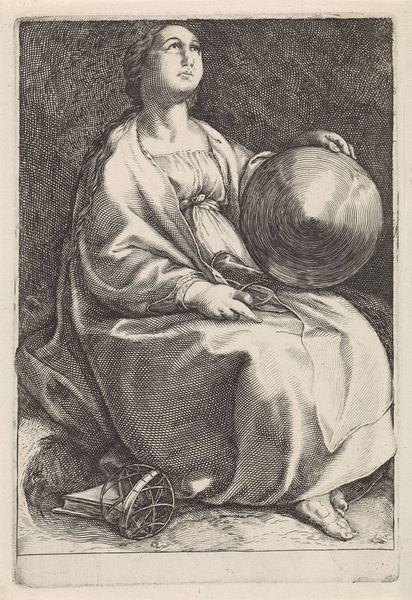
drawing, pen
#
portrait
#
pencil drawn
#
drawing
#
baroque
#
pencil sketch
#
charcoal drawing
#
vanitas
#
pencil drawing
#
pen
#
portrait drawing
#
history-painting
#
pencil art
Dimensions: height 335 mm, width 270 mm
Copyright: Rijks Museum: Open Domain
Editor: Here we have Cornelis Visscher's "Allegory of Transience," created sometime between 1654 and 1658. It's a drawing with pen and pencil and it gives a somber feel to the portrait. What do you see in this piece, from a historical and cultural perspective? Curator: Well, immediately I'm drawn to the *Vanitas* elements—the skull, the hourglass wielded by Father Time in the background. These were potent symbols in the 17th century, reminding viewers, particularly the wealthy elite, of their mortality and the fleeting nature of earthly possessions. The woman’s gaze, directed away from us and towards that figure in the distance, speaks volumes about her interiority. Editor: The detail is quite astonishing. Who would have been the audience for such a drawing? Curator: Considering the presence of the skull and Father Time, this image would likely have resonated with educated individuals steeped in humanist ideals. During this time, a rising merchant class attained fortunes which prompted discourse about morals. The symbolism encouraged reflection and repentance during the time, and, quite possibly, this may have been a commentary on social and moral concerns. Do you notice any other objects depicted? Editor: There's a globe, a book, and a chalice. I suppose each symbolizes worldly knowledge, literature and earthly indulgence? Curator: Precisely. This brings us to thinking about power dynamics of the period. Who had access to knowledge? How did social structures affect these so called earthly indulgences? Even her pose speaks volumes about societal expectations of femininity and intellectualism in the 17th century. The intent is clear. What might the work communicate to today's viewers? Editor: It's thought-provoking to see how this "Allegory of Transience" engaged with philosophical and cultural currents of its time. I can now appreciate this drawing with a more discerning eye. Curator: It is when art transcends its immediate context and speaks to us about enduring human conditions like mortality and inequality that it achieves its full power. We both have learned something valuable.
Comments
rijksmuseum about 2 years ago
⋮
Cornelis Visscher drew this young woman with coarse as well as very fine hatching in black chalk. While gazing beyond the picture plane with her sparkling eyes, she points out a sheet with verse to the viewer. Its message, in combination with the skull, the statuette of Time, and the broken glass, could not be clearer: life is finite.
Join the conversation
Join millions of artists and users on Artera today and experience the ultimate creative platform.
